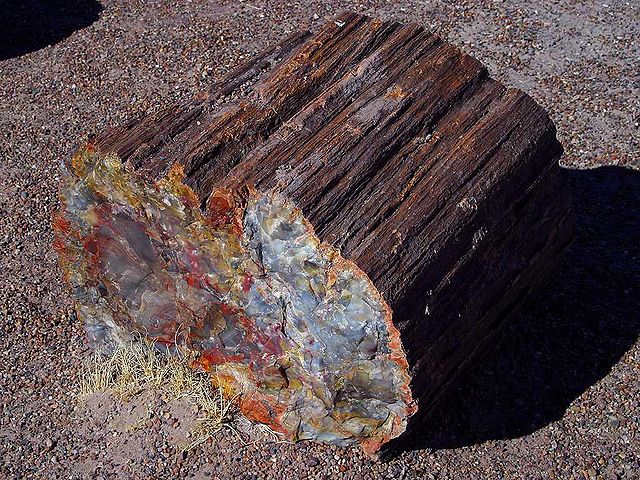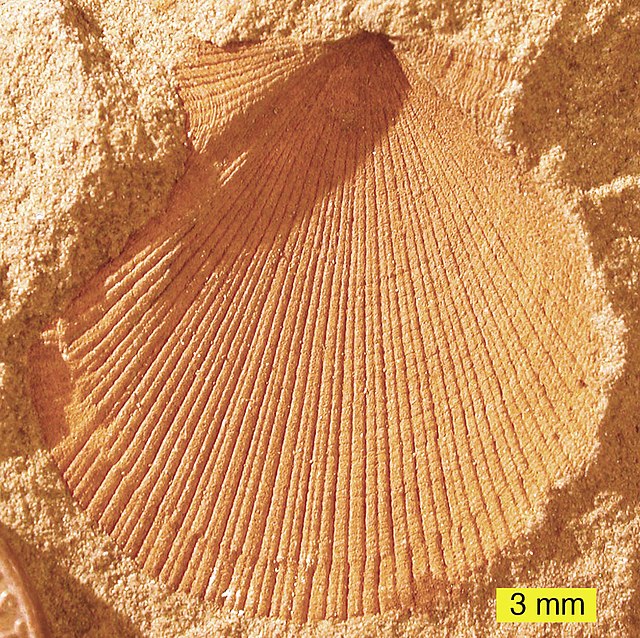Petrified wood, also known as petrified tree, is the name given to a special type of fossilized wood, the fossilized remains of terrestrial vegetation. Petrifaction is the result of a tree or tree-like plants having been replaced by stone via a mineralization process that often includes permineralization and replacement. The organic materials making up cell walls have been replicated with minerals. In some instances, the original structure of the stem tissue may be partially retained. Unlike other plant fossils, which are typically impressions or compressions, petrified wood is a three-dimensional representation of the original organic material.
Polished slice of a petrified tree from the Late Triassic Epoch (approximately 230 million years ago) found in Arizona. The remains of insects can be detected in an enlarged image.
Petrified log at the Petrified Forest National Park
Microscopic view of petrified Callixylon wood
Petrified wood mineralized with carnotite from St. George, Utah
A fossil is any preserved remains, impression, or trace of any once-living thing from a past geological age. Examples include bones, shells, exoskeletons, stone imprints of animals or microbes, objects preserved in amber, hair, petrified wood and DNA remnants. The totality of fossils is known as the fossil record.
Permineralized bryozoan from the Devonian of Wisconsin
External mold of a bivalve from the Logan Formation, Lower Carboniferous, Ohio
Silicified (replaced with silica) fossils from the Road Canyon Formation (Middle Permian of Texas)
Recrystallized scleractinian coral (aragonite to calcite) from the Jurassic of southern Israel








